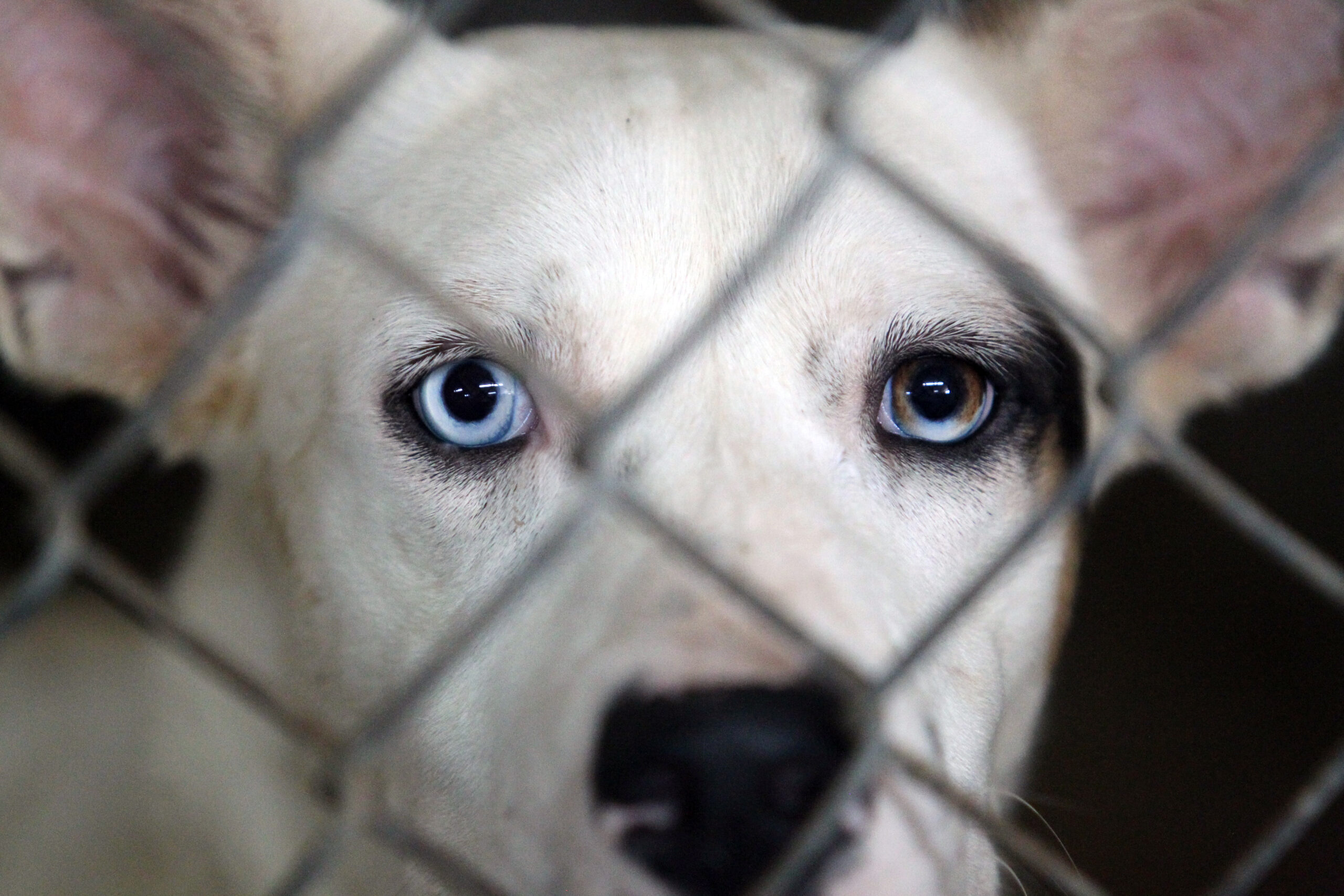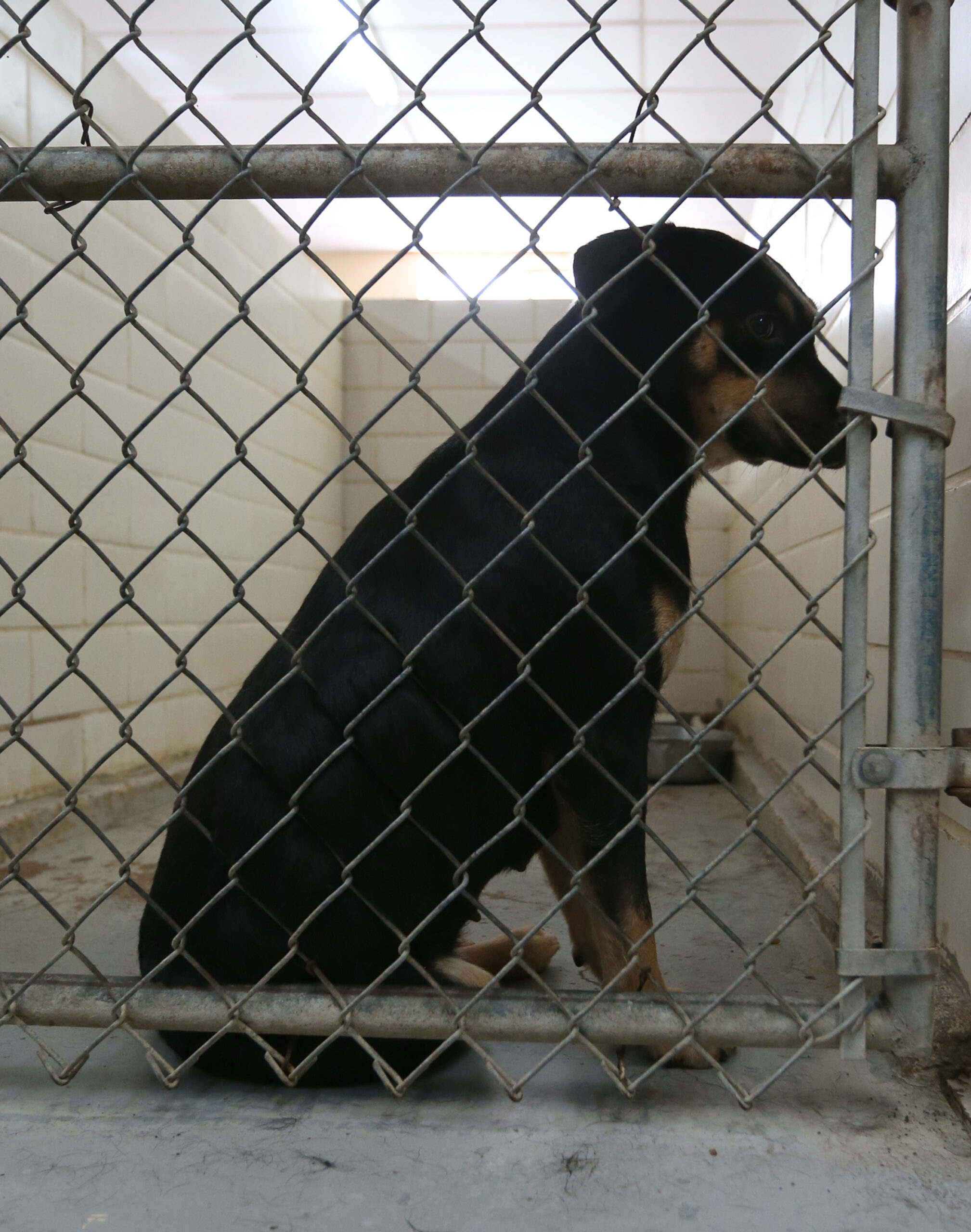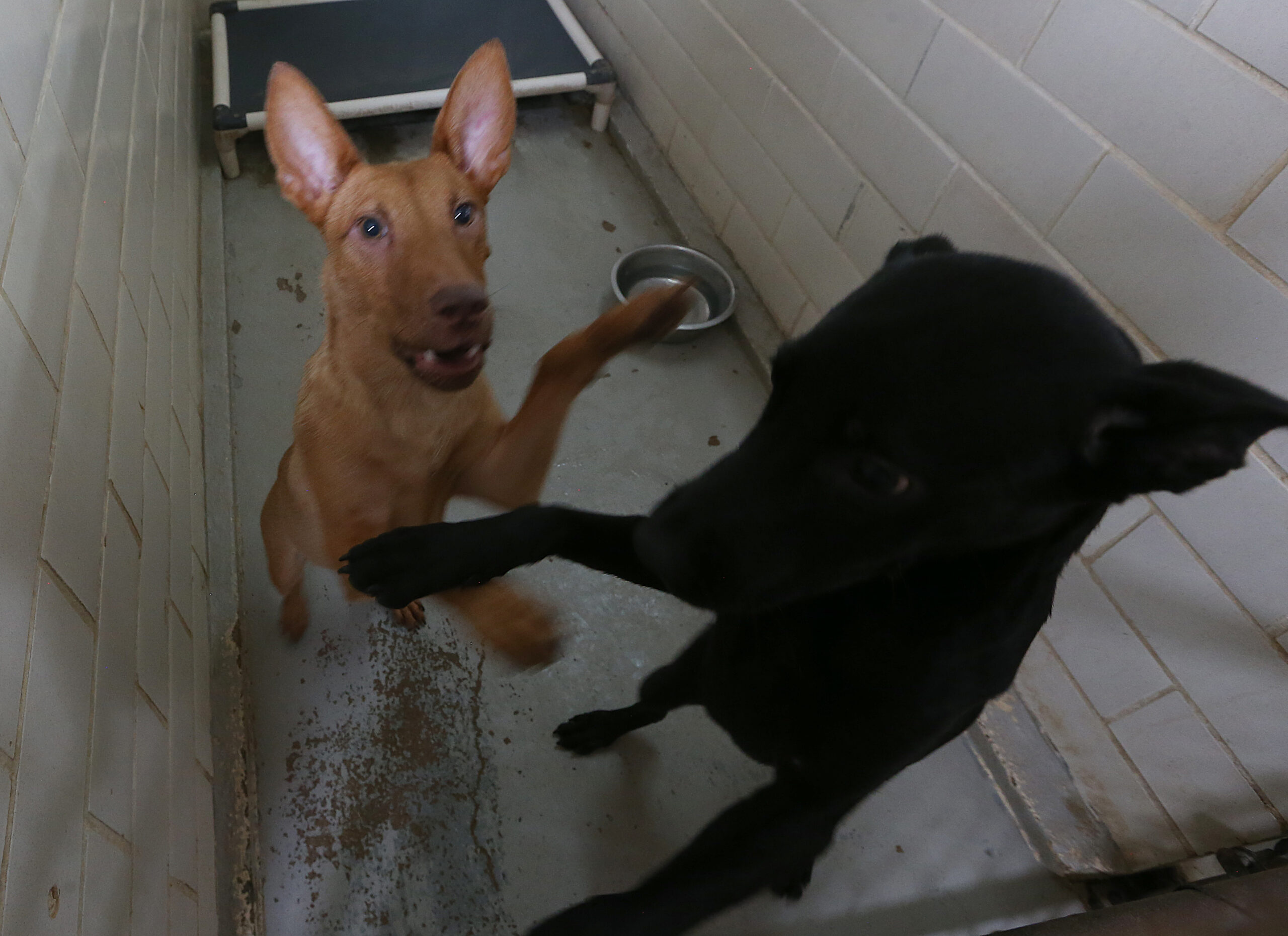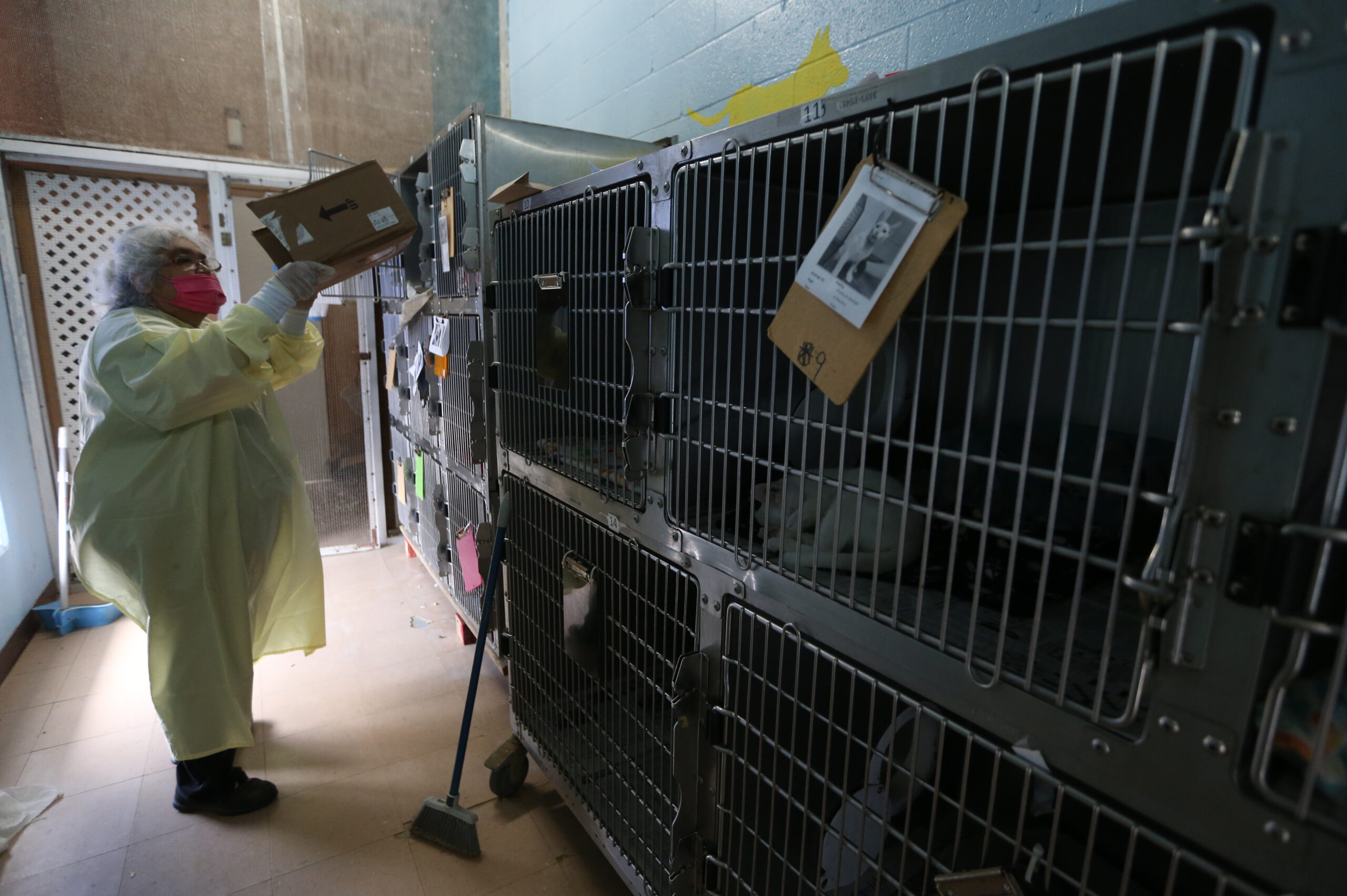
Overwhelmed with animals from the cities of Edinburg, McAllen, Palmhurst, La Joya and Hidalgo County, and the excessive number of animals going into the shelters, Palm Valley Animal Society has lost the no-kill status it long-worked to achieve.
“Intake kind of jumped back up after things started getting better this summer because we were striving for the 90% save rate,” Keely Lewis, PVAS board president, said Thursday. “That’s our goal. We ended up with more than 1,700 animals in our care between the two centers and foster homes.”
She said the shelters were forced to put more than the ideal number of dogs in each kennel. Eventually, they were forced to step up euthanizing dogs that are aggressive towards other dogs and those that test positive for distemper.
She said that when everything is going as it should at the shelters, dogs are able to receive treatment for their ailments.
“The problem is that we have to have somewhere for them to get well, and we’ve run out of space,” Lewis said. “We have had to make some very difficult decisions mainly to keep our population down because if you’re that overcrowded, then it starts impacting the health of all the animals. And the staffing needs are so great.”
PVAS has since implemented a 30-day shutdown, only allowing emergency cases to be admitted into the shelters.
Since then, the shelter has been able to lower the number of animals in its care to about 800 animals.
“The shutdown has really made a difference,” Lewis said. “We’ve started back most of our intake now. It’s an ongoing challenge. What we’re hoping is — now that we’re getting back to manageable numbers where we have like two dogs to a kennel — we have space for the animals that are in our care and we’ve been able to add some staff and make sure that we have enough hands on-deck to take care of these animals.”

Lewis said that PVAS is having to shift its focus and seek more assistance from the local municipalities.
They want municipalities to increase the percentage of funding for each animal that goes through the shelter as well as working together to figure out a solution to decreasing the number of animals that are brought into the shelters.
“A lot of animals are brought in needlessly,” Lewis said. “They are sometimes picked up within a block of their own homes. If we can retrain the animal control officers to scan and see if they’re chipped, and if they are, see if there’s an address and take them home instead of to the shelter. Or ask around if anybody knows if that animal lives near there so they’re not needlessly brought into the shelter.”
She said that another goal is to avoid exceeding capacity and to always have enough staff on-hand to provide adequate care for the animals.
“We are a shelter,” Lewis said. “At the end of the day, we have to have it be a safe, positive environment for the animals and for the staff. When you’re overcrowded, you can’t do either. It’s just hard on everybody.”

Lewis said that the best way to help the shelter and the animals is to volunteer.
“We need volunteers of course to walk the dogs because they’ve got to get out for a break from their kennels in the shelter, but also to bathe dogs and even cats, and to socialize cats, to make phone calls,” Lewis said. “There are probably 20 areas where we need volunteer help in. It’s not just walking dogs. It’s a lot of other things.”
She added that other ways to help the shelter include fostering or adopting one of the animals, as well as making donations of in-kind resources.
“I always tell people, ‘If you have an extra bathroom in your house, you can foster kittens,’” Lewis said. “They don’t need the whole house. The fostering is something that helps us keep the animals out of the shelter. It also keeps the animals healthier and more socialized because being in a shelter environment is not the best way to socialize an animal. They need that love and attention.”

Lewis said she hopes the community can rally together to help the shelter provide the humane care that the animals need.
“So often our staff and our board and our executive director are vilified for one reason or another,” Lewis added. “I really invite people to be part of the solution — to come work alongside us and help us save these animals, and not just sit on the sidelines and gripe about one thing or another. To really come, roll up their sleeves, and work alongside us and see that we really are trying the best we can every single day.
“If they were to be part of the solution, then we wouldn’t have so many problems.”
Check out FESTIVA and community editor Tami Cupples-Hernandez’s column illustrating her experience as an animal foster, while also noting the nonprofits she volunteers with are in the midst of a crisis:



